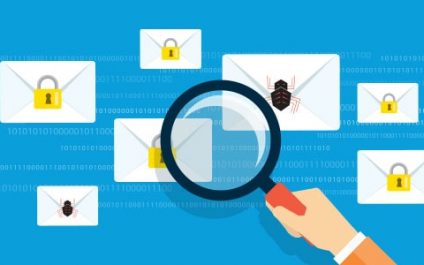Cybercriminals are always devising ways to attack both individuals and businesses inconspicuously. This helps them avoid detection, which buys them time to infiltrate a system and take hold of information they can leverage for a bigger attack. One way crooks do this is through distributed spam distraction (DSD) schemes. What is DSD? DSD is a […]
Here’s what you should know about distributed spam distraction
Distributed spam distraction hides illegal activities
As annoying as spam email is, it’s usually pretty harmless. But hackers have been using a method called distributed spam distraction (DSD) where spam email is used to carry out illegal activities. Learn more about DSD and how you can safeguard your systems against it. What is DSD? DSD is a type of attack wherein […]
What is VoIP theft of service?
Despite often going undetected, theft of service is the most common type of fraud for phone systems that use the internet to make calls. How does it affect an organization’s VoIP network and how can businesses prevent or minimize the risk of this type of fraud? Let’s take a closer look. What is theft of […]
Beware of distributed spam distraction
It’s frustrating to receive dozens of spam messages in your email inbox. Spam mail is so easy to delete, which is why most people think it’s just a harmless annoyance. But hackers have devised a way to make use of spam mail for criminal purposes. It’s called distributed spam distraction, and here’s what you need […]
Preventing theft of service in VoIP
VoIP phone systems use the internet just like any PC. Therefore, hackers can gain access to your servers and data network through VoIP phones. Understanding how to combat theft of service in VoIP is critical, and if you want to learn how to do it, read on. What is theft of service? Internet-based calls are […]
The dangers of distributed spam distraction
Users get around 200 emails in their inbox a day, including work messages, automated payment slips, and everyone’s least favorite email, spam. Spam messages are mostly harmless, but when you get more than 10,000 of them flooding your inbox, you’re probably the victim of a special type of spam attack. Understanding DSD Distributed Spam Distraction […]
Keep Yourself Protected While Online
Identity theft is one of the most common cyber-crimes these days, as more and more people become dependent on the internet for many of their needs. Fortunately, following some simple tips can do wonders to help your online experience become much more secure. Security experts are seeing a rise in the incidence of cyber-crime these days as more and more people use the web for their day-to-day needs. No one is spared – both businesses and private individuals have become victims of opportunistic cyber-criminals who take advantage of loopholes in security systems and a lack of foresight and alertness on the part of users. One common cyber-crime is identity theft, in which hackers steal and assume the identity and personal information of someone else. Under the guise of the usually unknowing victim, these unscrupulous individuals commit fraud or other crimes. While there is no 100% guaranteed way to be safe from identity theft when online, there are a number of steps you can take to protect your identity and your data. Have the right security software. One of the keys to keeping your identity and data secure is having the proper security software in place to protect your system. Also make sure to update the software regularly. Know the modus operandi. It’s also important to be aware of the different scams and techniques hackers use, such as phishing, which involves duping the user into clicking a legitimate-looking (but fake) link that has the victim enter personal information or download a file that introduces malware into the system. The rule of thumb is that if an email is unsolicited, there is a high probability of it being a scam or phishing email. Be stingy with your personal information. Be sure to only fill out personal information on sites that are legitimate and that you trust, and even then, only if you absolutely need to. Check and double check things like the URL or the company’s tag line to know if a site is what it says it is and whether it is secure. Phishing sites also look legit – but a careful look should be enough to tip you off that something’s amiss. Create unique passwords. The more complicated your passwords are, the harder they are to guess or hack. So don’t pick generic passwords like “password” or “12345″ or things like your birthday or wedding anniversary. The best passwords are alphanumeric – a combination of both letters and numbers. Secure wireless networks. It’s important to allow only the right people to have access to your wireless networks. Besides saving bandwidth, this also prevents leechers and hackers from using your connection to tap into your system or use it for unscrupulous activities. To know more about keeping your identity and data secure, please give us a call and we’ll be happy to discuss a custom security solution that meets your specific needs.
Important Update: President Signs Red Flag Clarification Act into Law
Professional service providers such as attorneys, accountants, and doctors no longer fall within the definition of a creditor under the Red Flag Rule. The Federal Trade Commission’s (FTC) so-called “Red Flag Rule,” which requires all businesses that are potential identity-theft targets to develop plans to spot red flags and prevent theft, received much criticism for being too broad. But now there’s some relief: S. 3987, the Red Flag Clarification Act, which President Obama signed into law in December 2010. To recap, under the Red Flag Rule, the FTC had been interpreting “creditor” broadly by including organizations that defer payment for goods or services and bill clients later. This led to widespread concern that the Red Flag Rule would be applicable to entities not typically thought of as creditors, including law firms and health care providers. The Red Flag Clarification Act exempts such entities by revising the definition of creditor to exclude creditors “that advance funds on behalf of a person for expenses incidental to a service provided by the creditor to that person.” Essentially, the Red Flag Clarification Act limits the scope of the Red Flag Rule to creditors that regularly and in the ordinary course of business obtain or use consumer reports in connection with a credit transaction; furnish information to consumer reporting agencies in connection with a credit transaction; or advance funds to a person based on the person’s obligation to repay the funds. The legislation does include a provision that would allow other types of creditors to be subject to the Red Flag Rule if the agency with authority over the creditor (such as federal banking agencies) determines that the creditor has accounts that are subject to a reasonably foreseeable risk of identity theft.


